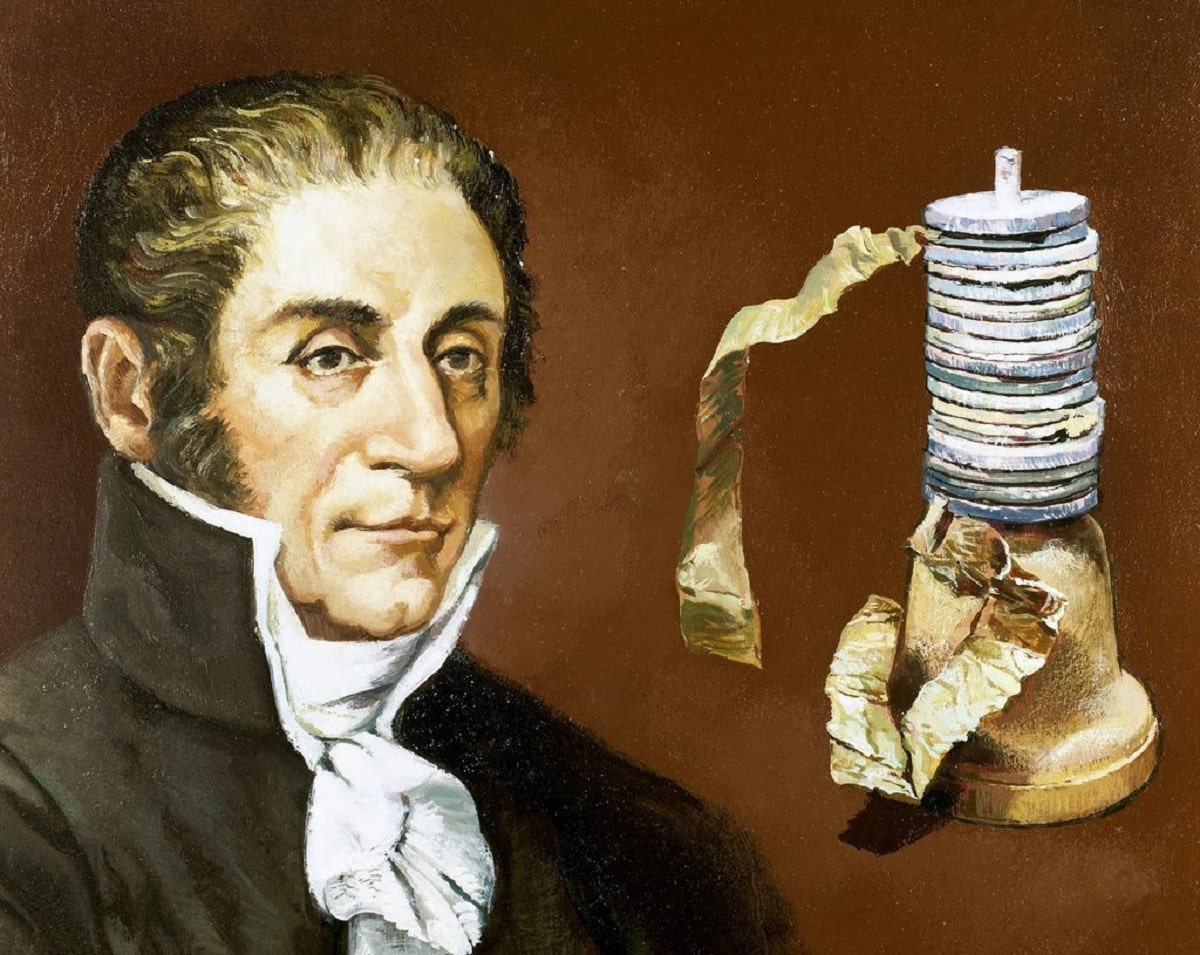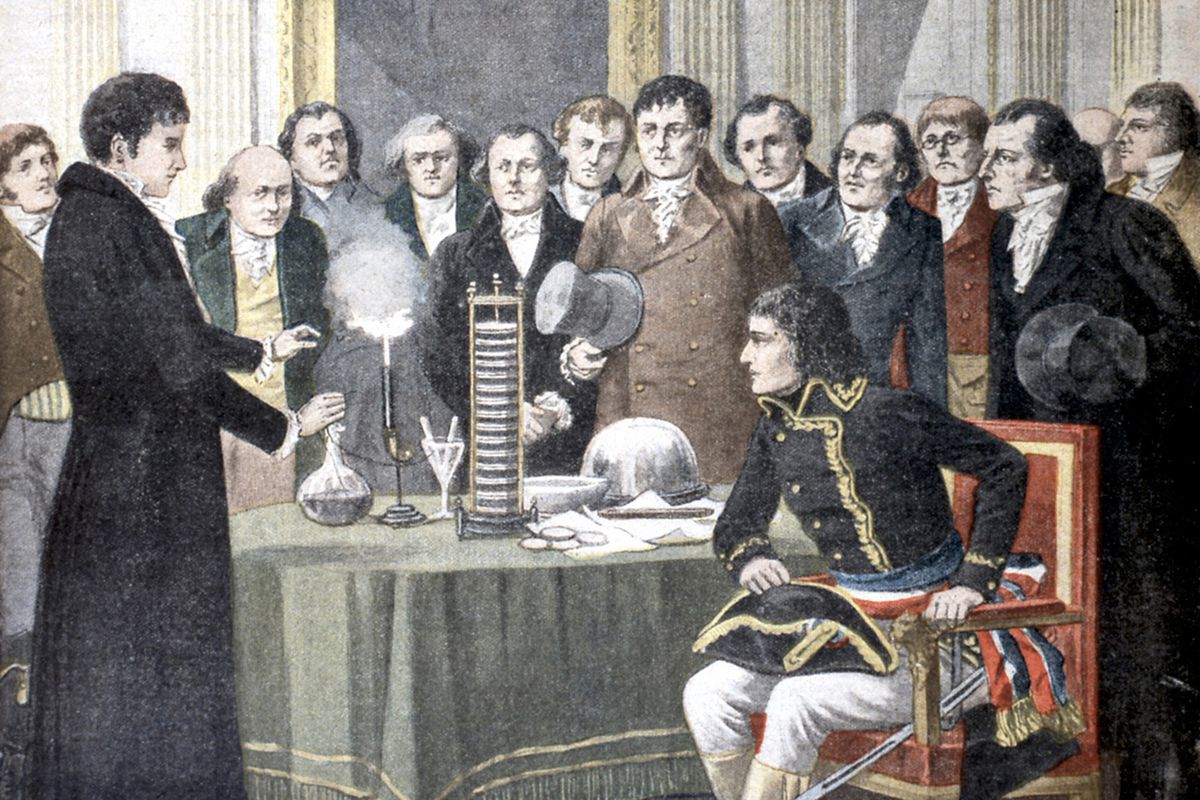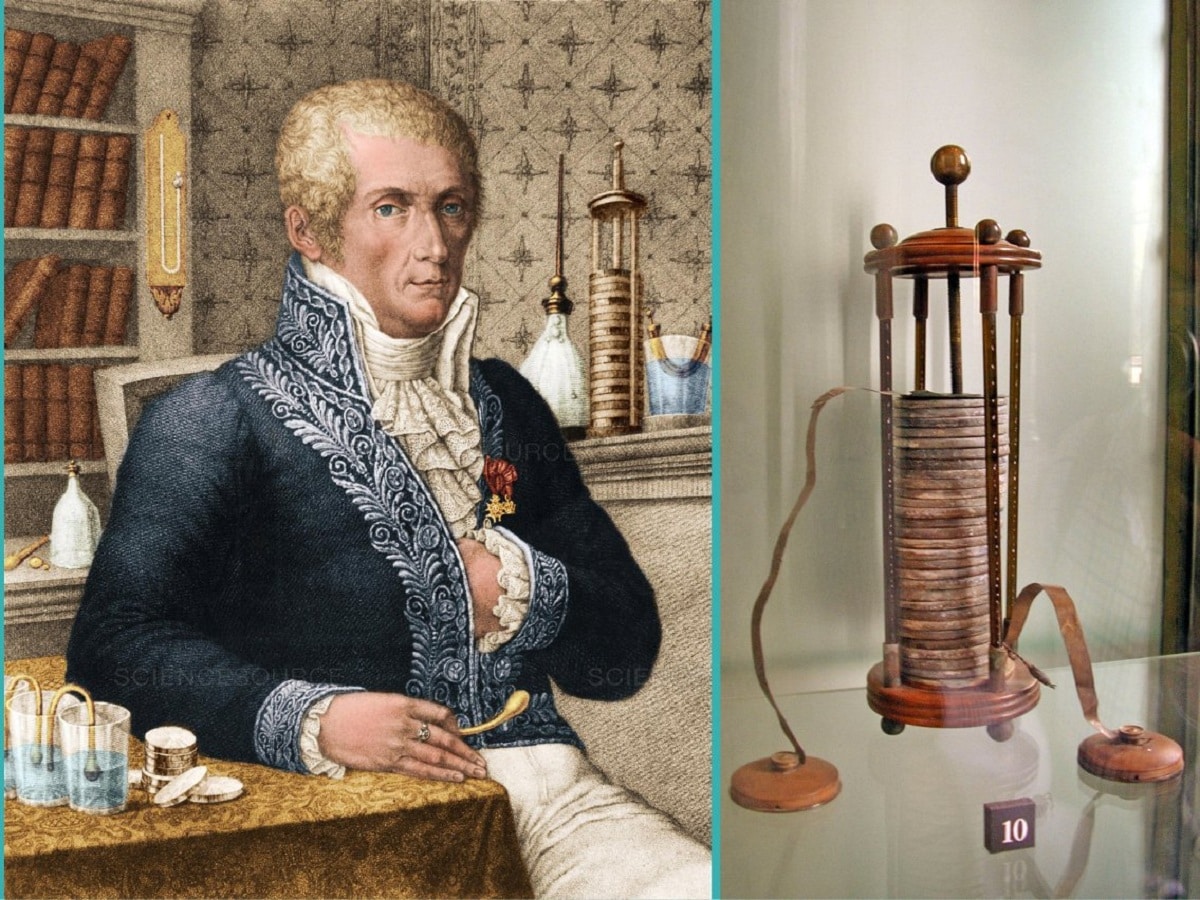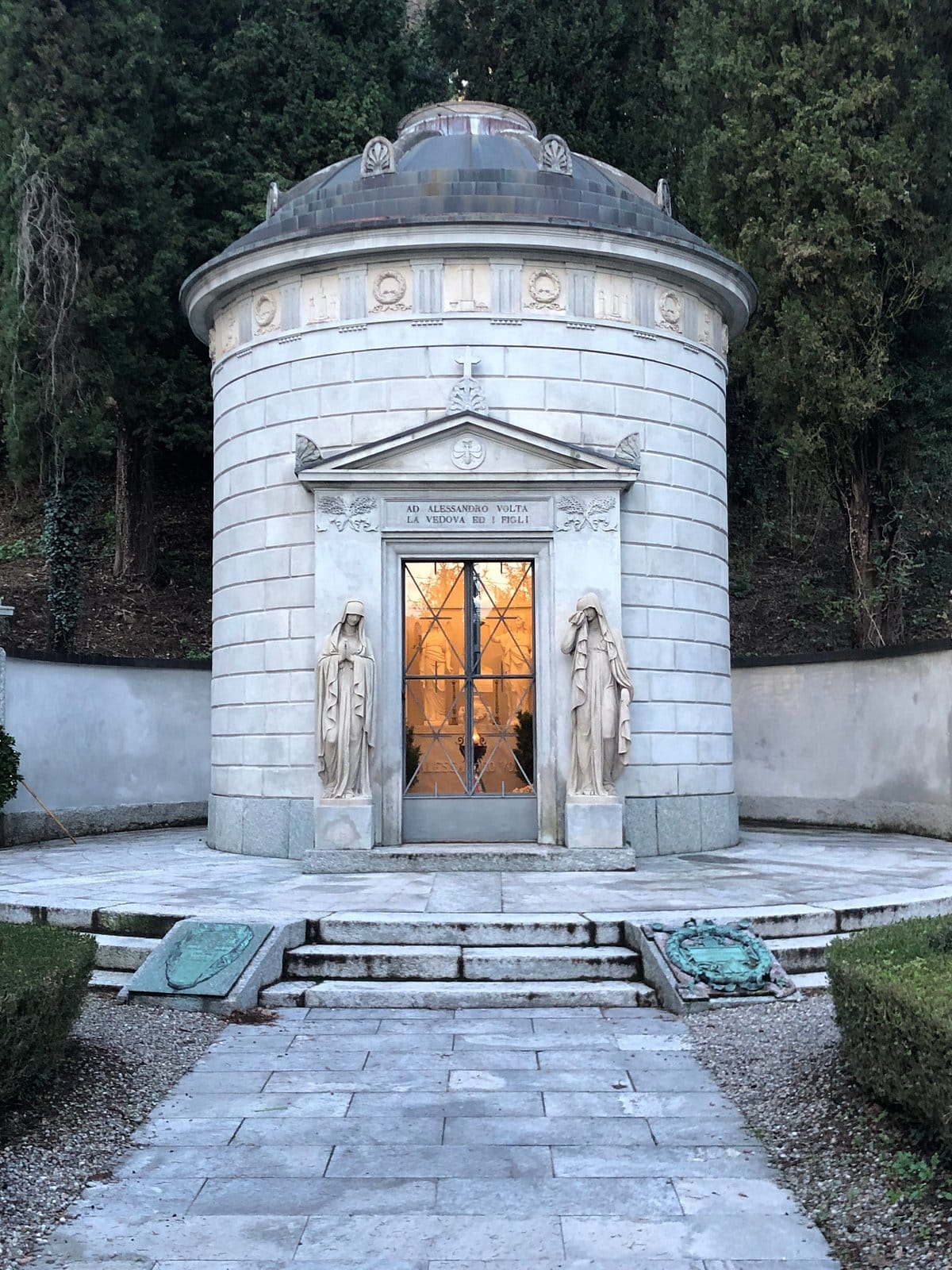
The Italian Alessandro Volta created the so-called volta battery, an important advance in science, since for the first time in history he converted chemical energy into electricity through a brief chemical process, thus producing a stable current. The biography of alessandro volta collects the summary of all his exploits and contributions to the world of science as well as his personal relationships and evolution throughout his life.
In this article we are going to focus on telling you in detail the biography of Alessandro Volta and his best contributions to science.
Biography of Alessandro Volta

Alessandro Volta was an Italian scientist best known for developing the accumulator (also known as a cell or battery) in the 1800s. He was born on February 18, 1745 into a wealthy family of Como, in northern Italy. Like five of his nine siblings, his father at the time, and some of his uncles, he was going to prepare for an ecclesiastical career, so his parents (Filippo Volta and Maria Maddalena (from Conti Inzaghi)) sent him to a Jesuit college in 1758. .
However, Alessandro Volta he was much more interested in science than in the clergy, especially electricity, which was hardly studied. After completing his studies in 1760, he continued to study and read the works of famous scientists such as Giambatista Beccaria, Pieter van Musschenbroek or Jean-Antoine Nollet, and had personal contact with them. Especially with Beccaria, a professor at the University of Turin and one of the most prominent physicists in Italy. Beccaria will encourage Volta to perform experiments and publish his results. In 1769 he would publish his first work.
In 1774 he was appointed director of the public school of his native city, and by 1775 his fame had grown by the invention of the permanent electrophoresis apparatus -which would soon be used throughout Europe, generating and generating electrostatic charges-, so much so that he was appointed professor in experimental physics at Cuomo College.
Volta pistol, the ancestor of the lighter

In 1776 he made several discoveries as a result of his experiments with flammable methane in swamps. He developed the "Volta pistol", in which an electrical spark in a glass bottle creates a fire, which may have been the precursor to our popular lighter. This discovery also led him to replace the lamp oil with methane gas, creating the so-called Volta lamp.
With these results, he improved his pistol, created a device to analyze the oxygen content of gas, and developed an instrument now known as a eudiometer. Between 1778 and 1819 he was professor of experimental physics at the University of Pavia. There, in 1783, he invented an electroscope to measure small amounts of electricity and quantified the measurement by creating his own unit of measurement, "voltage."
Best Feats in Alessandro Volta Biography

In 1792, he learned of the experiments on frogs by the anatomist Luigi Galvani, who tried to decipher the electrical properties of nerve impulses and he had been studying the system for more than 10 years. According to Galvani, two different metals come into contact with the muscles of a frog or other animal to generate electrical currents because these responses are produced by electrical currents circulating in the organs of the animal. Galvani claimed that the frog was a "Leiden flask," a primitive capacitor or energy storage device.
Volta began conducting his own experiments based on the results of his colleagues. However, he concluded that the electric current was not generated by contact with animals, but only by contact between metals. Frogs simply respond to electrical charges by "feeling" them. His claim led scientists across Europe to support Galvani or Volta. Volta wrote the following:
All these experiments do not conclusively prove that animal electricity exists since the organs remain passive, while the metals are always active.
Volta's experiments demonstrating the generation of electricity between metals led him to create (between 1799 and 1800) his most famous and successful invention: the "cylindrical Volta cell", the first working battery in history. It consists of elementally stacked metal plates. Copper and zinc are separated from each other by textiles soaked in acid (initially water or brine).
The invention is described in a famous letter to the Royal Society by Sir Joseph Banks. In 1791 he was made a fellow of the Royal Society of London and in 1794 he received the Copley Medal.
Accolades
In 1801, Napoleon Bonaparte arrived in Paris after being summoned by Napoleon to the French Institute to demonstrate his scientific advances in electricity. There, he amazed everyone present, and a committee of scientists from the French Institute of Sciences wrote an evaluation report praising the revolutionary invention of the "Volta battery."
In 1802 he received the Gold Medal of Honor from the French Academy. In 1805 he was elected a foreign member of the Göttingen Academy of Sciences and, in 1808, a foreign member of the Bavarian Academy of Sciences.
Napoleon was very pleased with the progress of the Italians, shortly after the creation of the Republic of Western Sardinia in Italy, he made him count and senator of the Lombard kingdom and assigned him a pension. Years later, after the defeat of France in 1815, the Emperor of Austria appointed him director of the department of philosophy at the University of Padua. His work was published in five volumes in Florence in 1816.
In 1861, Volta received the highest honor as a physicist: according to the British Association for the Advancement of Science, the unit of measurement for electrical voltage is known internationally as the volt. In 1964, the lunar crater Volta was named after him, and in 1999 the asteroid "8208" was named after him. Even in the XXI century, his name lives on. For example in the Toyota «Alessandro Volta» electric car.
His career survived changing power relations: he supported both the Austrian Habsburgs, Napoleon's enemies, and the Corsicans themselves. He retired to his country house at Camnago, near Como, where he spent the last years of his life. He died on March 5, 1827. His mausoleum is decorated with statues and reliefs in the neoclassical temple style, created by the architect Melchiorre Nosetti and completed in 1831.
I hope that with this information you can learn more about the biography of Alessandro Volta and his exploits.